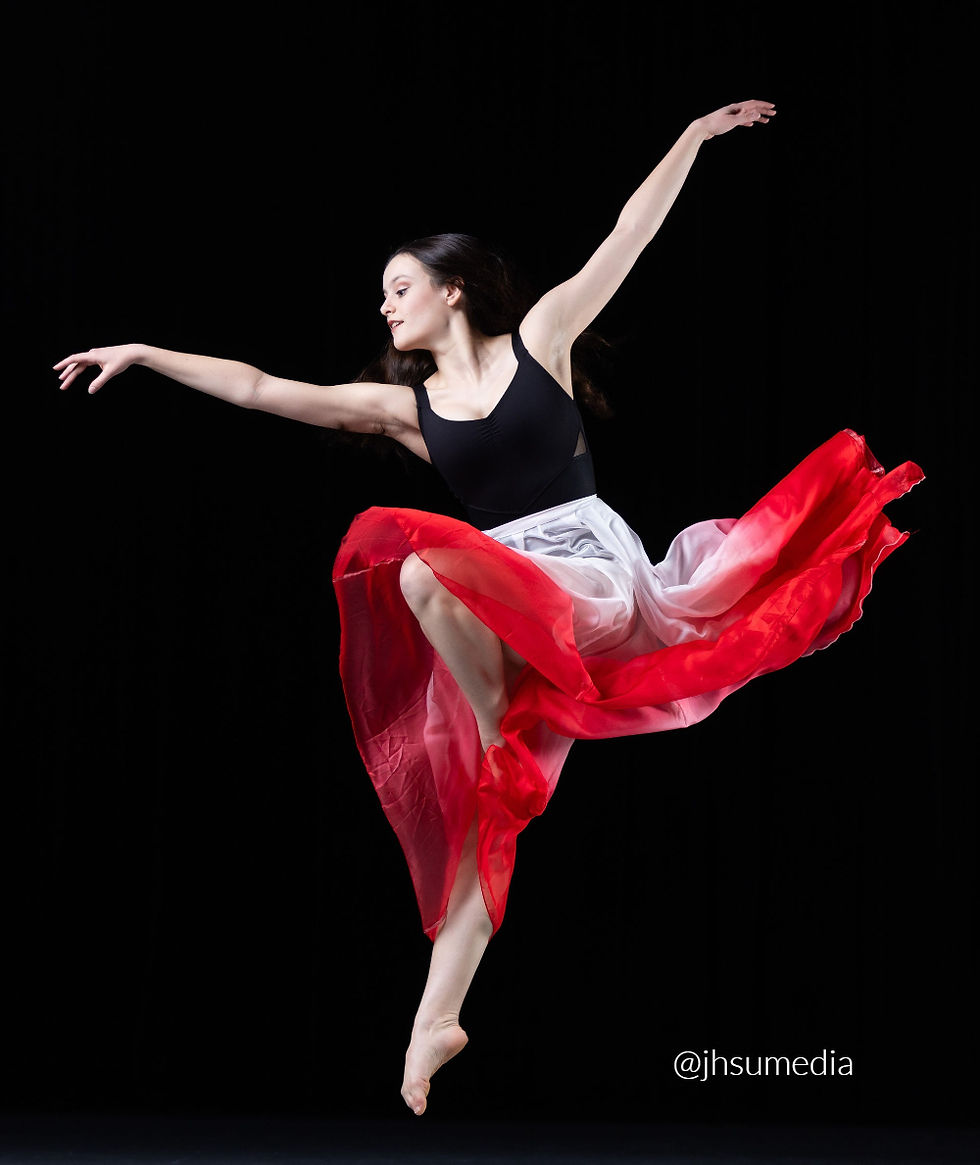Pilates Builds Strength and Control for this Dancer, Teacher
- Laura Bond Williams
- Jul 10
- 3 min read
Mat Pilates ATX welcomes guest teacher Naomi Tharp to lead our mat Pilates classes at the Circle C Community Center from July 22 - 31. Naomi completed her Pilates training in mat and reformer (Balanced Body) while earning her BFA at Belhaven University. She continues her dance career this fall as a company dancer with Montgomery Ballet.
Naomi's clear, compassionate teaching and well-planned mat Pilates class keeps students moving, strengthening their mind/body connection and challenging deep core strength. You can buy a 2-for-1 class package for $32 and sign up for her classes here.
I talked with Naomi about becoming a Pilates teacher and why her Pilates practice is part of her self-care as a professional dancer.

What specific results or positive changes have you experienced since beginning Pilates?
Since beginning Pilates, I am much more aware of my body’s smaller, intrinsic muscles, and I learned to use them more effectively. Pilates emphasizes whole body movements rather than working a single, specific muscle. These exercises mimic everyday movement patterns like lifting and pushing, and we use our minor muscle groups* as well as major ones. As a result, when I am practicing Pilates consistently, I feel stronger, more coordinated, and more confident in my body on a day to day basis!
How did becoming a Pilates teacher change your own practice?
Becoming a Pilates teacher had a significant impact on my own practice. In my certification course, I learned each exercise in much more detail than I had as a student. This helps me as I continue practicing Pilates; I have an even deeper understanding of my body and what to focus on and feel in each exercise.
You’re a professionally trained dancer. What makes Pilates different from dance for you?
For the past 17 years I have trained in many styles of concert dance such as Ballet, contemporary, and modern. Although there are many similarities between concert dance and Pilates, Pilates is a unique form of exercise because it emphasizes strength and coordination while staying low-impact and high intensity.

If a friend wants to begin Pilates, what advice or encouragement do you give them?
I encourage beginners to be consistent and not be afraid to make a modification! Pilates is a fantastic way of building strength, but it takes repeated and consistent work before you see significant change. This is normal and expected, as it takes time for the body to adapt to a new way of moving – and a new way of understanding movement.
In a similar vein, don’t be afraid to learn an exercise in steps when you begin! Many Pilates exercises can be done in their full form as a beginner, and other exercises take time and consistent practice to get the full benefit. Follow a teacher’s suggested modification or progression if you’ve never learned an exercise before. It’s normal to work on coordination and strength so that you can execute an exercise in its entirety with confidence.
Curious about Pilates? See the Mat Pilates ATX Schedule.
*Mat Pilates ATX note: What are minor muscle groups? In Pilates, we focus on originating movement with breath from our center (our “core” and its muscles including diaphragm, pelvic floor, internal/external obliques, transverse abdominis, and multifidus) and then moving our limbs (aka, arms & legs). So “minor muscle groups” we pay the most attention to are those that work with the core as we flex, extend and rotate the spine. Examples: multifidus, erector spinae, quadratus lumborum; shoulders’ “rotator cuff” muscles including teres minor, infraspinatus, subscapularis, supraspinatus. Then there’s pelvic floor muscles, iliopsoas, and more.
Major muscles? Examples are latissimus dorsi, e.g. your “lats,” quadriceps (fronts of your thigh), and gluteus maximus – your “glutes”.




Comments